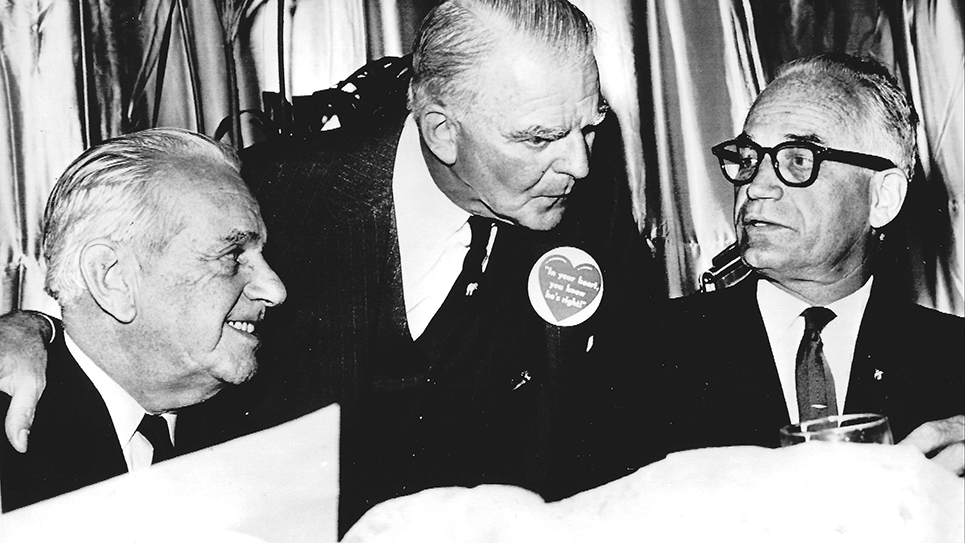By Tom Mattingly
In the late 1960s and into the 1970s, there was one collegiate game on the tube each weekend, several emanating from Knoxville.
ABC had the broadcast rights, and whatever game they chose, that’s what the nation saw, with a few exceptions for so-called “regional” games. (For example, when Notre Dame and Michigan State played that famous 10-10 tie on Nov. 19, 1966, fans in Knoxville and surrounding areas watched Tennessee and Kentucky.)
In 1968, two regular-season Tennessee games were on ABC, the Georgia game Sept. 14 and the Alabama game Oct. 19.
As was the case with the Georgia game, the Alabama game went to the final frantic seconds. Jimmy Weatherford, an All-American selection that season as a defensive back, blocked a potential game-winning field goal, by Nick Dean at the north end. Jimmy had changed places with Nick Showalter just before the snap and came charging through from the right side of the defensive formation to make the play.
“What did we have to lose?” asked Weatherford. “They were going to win if we didn’t block the field goal. It was just a chance, one of those oddities that worked, like throwing the dice and winning.”
Weatherford’s blocked kick ending the game was as dramatic as what happened in the final seconds of the 2009 Alabama game, Alabama 12, Tennessee 10. Weatherford could never, ever, be confused with Alabama’s Terrence Cody, AKA “Mount Cody,” who saved that game with his field goal block, but the result was the same.
On this day in 1968, Tennessee partisans went home happy. Alabama folks hit I-75, U.S, 11, and I-59, wondering what might have been
While the Vols and Crimson Tide were slugging it out on the newly installed Tartan Turf on Shields-Watkins Field, there was a fascinating drama being played out between the broadcast booth, the production truck, and a large room under Section X.
There was a mini-studio set up, where the television graphics were being produced, encompassing the relevant statistics for the game, player identifications, and the scores of other games being played.
There were game monitors, but no sound. We could, however, hear the crowd noise just outside the door.
There were metal cylinders covered with black felt, accompanied by a great many white numbers and letters to be applied thereon. There was a special camera that showed only the letters and numbers, allowing them to be superimposed on the game broadcast. Those of us who worked there thanks to the assistance of Haywood Harris wore black gloves to ensure a set of hands didn’t appear on screen by accident.
Before the game, we tried to figure which player(s) might have the greatest impact on the game for each team, so that when someone made a big play their name could appear on the screen in mere seconds.
The cylinder for the scores of other games was an entirely different story. We had 30 games or so listed with space for the score and the current quarter.
The sports ticker, probably from The Associated Press, hummed throughout the game, updating the scores, allowing us to change the current results ever so quickly…. and ever so carefully.
During lulls in the action, a voice would come over the headset, saying, “Roll the scores.” This was a slow-motion activity accomplished on cue, as one of us turned the canister by hand, allowing Chris Schenkel and Bud Wilkinson to comment perceptively on games in progress.
None of us could hear what Chris and Bud were saying to the listening audience. We could only hear the voices coming from the production truck and the producer in the television booth.
When the final horn sounded and the broadcast went off the air, it was time to settle up the accounts. Even then, we never saw Schenkel or Wilkinson, except on the monitor. They were probably quickly taken to the Hyatt Regency or McGhee-Tyson Airport.
We made $25 for the day’s work, the latter figure equivalent to $187.06 today, plus all we could eat, generally some form of mystery fried chicken and coleslaw, and a slice of bread or two, maybe potato salad and or pork and beans, with a choice of beverage, served on paper plates with plastic knives and forks.
When you look at today’s game telecasts and graphics, you could rightly conclude it was very primitive in those days, but it was all we had, all we knew. We couldn’t have foreseen how technology might have developed over the years. The 1968 Alabama broadcast may look funny now, but it looked perfectly normal back then.






